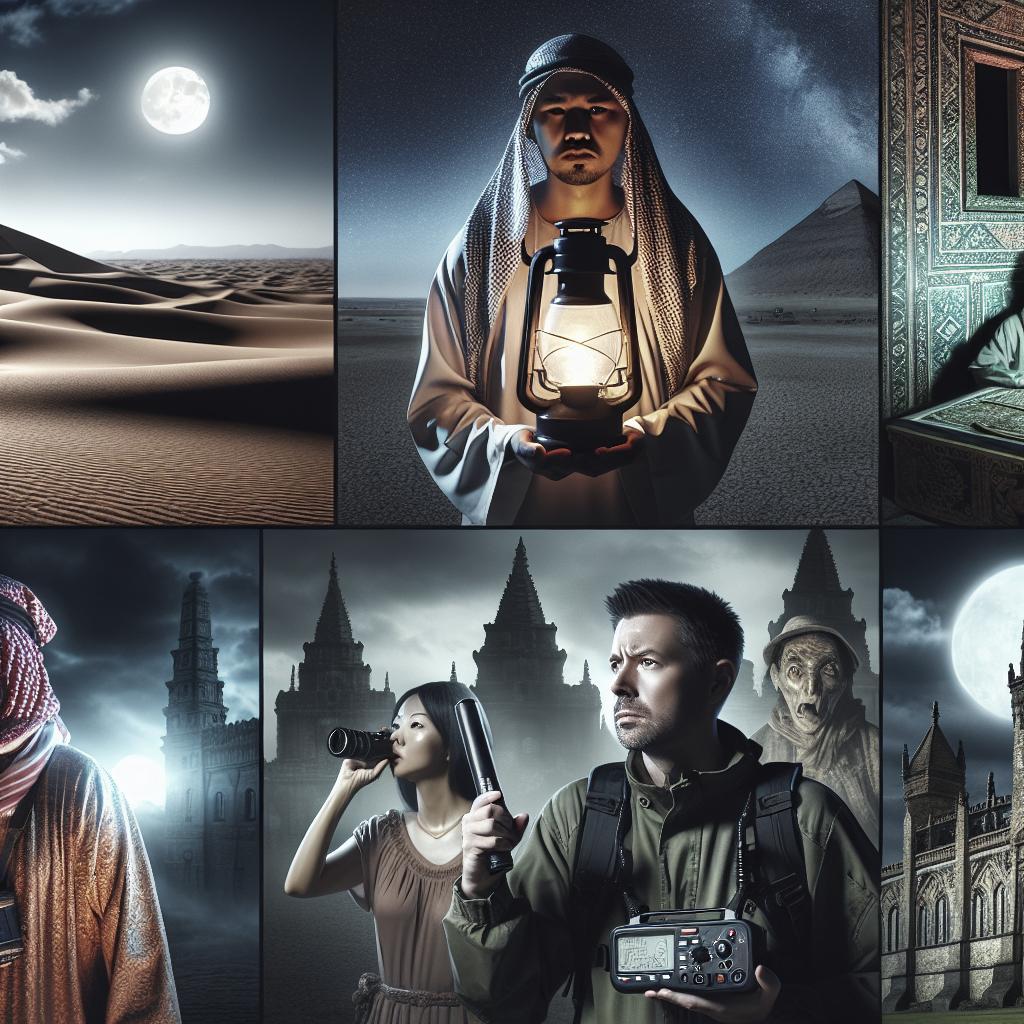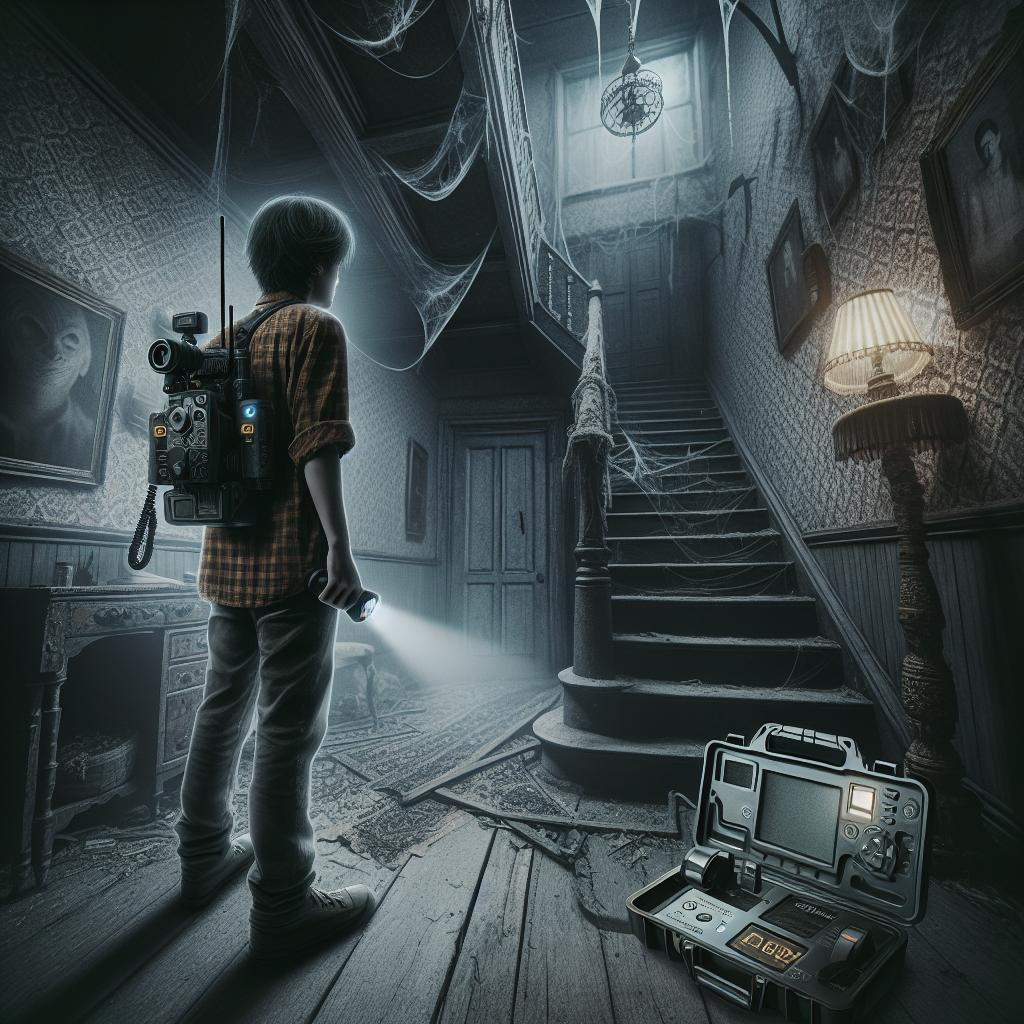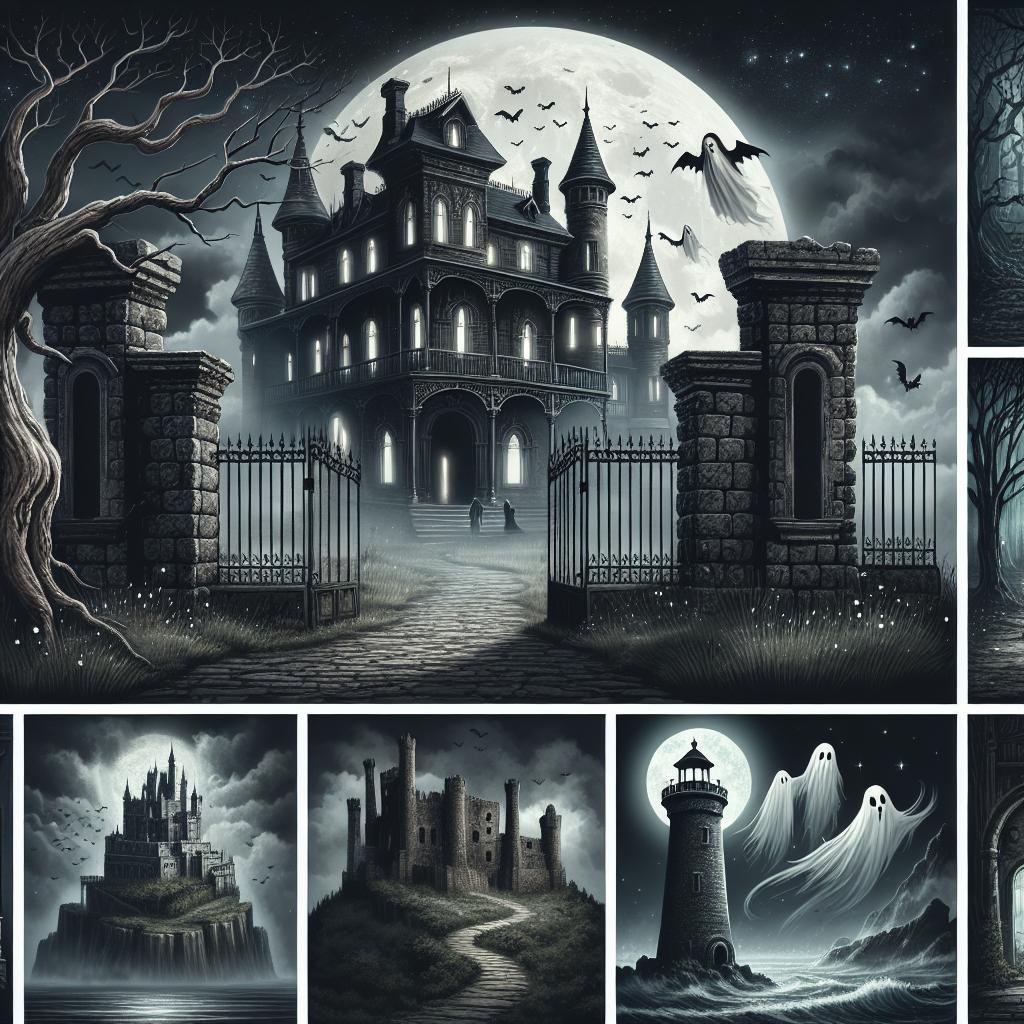“`html
Ghost Hunting: Exploring Diverse Practices Across the Globe
Curiosity about the paranormal is a universal phenomenon, leading to various interpretations and practices around the world. This blog post explores the differing approaches to ghost hunting across cultures, revealing underlying beliefs and traditions. From the unique essence and appearance of spirits to their sounds and presence, discover how global ghost hunting methods adapt to societal norms. Learn the cultural significance of distinguishing benevolent spirits from malevolent ones and understand how boundaries are drawn to protect individuals. Delve into the dynamic relationship between energy, consciousness, and how various cultures perceive and interact with the spirit world. By exploring these global ghost hunting practices, we gain insight into the shared human experience of confronting the unknown and the importance of respecting each culture’s unique perspectives.
Unpacking Our Fascination with the Paranormal
Humans have long been fascinated by the supernatural, seeking answers to questions about life beyond the physical realm. This curiosity manifests in our stories, folklore, and practices surrounding ghost hunting. Despite cultural differences, this interest reveals a pervasive human desire to understand what lies beyond our mortal experience.
The portrayal of paranormal entities varies greatly across cultures, influenced by regional beliefs and historical contexts. While Western societies often depict ghosts as sinister beings haunting the living, Eastern traditions might interpret them as ancestral spirits offering wisdom. These differing perceptions provide insight into how societies contextualize the unknown, leading to distinct ghost hunting practices.
The consumption of stories featuring fictional monsters and paranormal phenomena allows societies to explore their fears in a controlled environment. This exploration further reflects a human need to confront and understand what lies in the shadows, spurring diverse ghost hunting techniques worldwide.
Their Essence
The essence of a ghost or spirit differs significantly across cultures, affecting how ghost hunters approach their investigations. In some regions, spirits are viewed as protective ancestors who guide the living, while in others, they represent unresolved conflicts requiring appeasement. This variance influences the tools and rituals employed by ghost hunters.
For example, in Western cultures, ghost hunters might use electronic equipment to detect anomalies, guided by a scientific approach. Conversely, in regions like Africa, shamans may engage in spiritual rituals, relying on traditional wisdom to communicate with the spirit world. These practices underscore the deep-rooted cultural significance of ghosts and spirits across societies.
Such methods reflect not only the ghost hunters’ belief systems but also a community’s broader understanding of life, death, and the afterlife. By exploring these diverse practices, we gain a richer understanding of the universal quest to make peace with the unknown.
Their Appearance and Atmosphere
The depiction of spirits and their associated atmospheres can vary widely. In Western media, ghosts often appear in spectral forms, shrouded in mystery and fear. Conversely, in Eastern cultures, spirits are sometimes depicted as revered ancestors, manifesting in serene and respectful contexts, such as during festivals like the Hindu Pitru Paksha.
The atmosphere surrounding ghost hunting also differs. Some cultures emphasize the eerie and otherworldly, using spooky locations like haunted houses or abandoned buildings, while others may incorporate sacred sites or temples, where spirits are thought to reside peacefully among the living.
This variation in depiction and atmosphere highlights the cultural contexts that shape ghost hunting methods. Each approach reflects the societies’ internal narratives about life, death, and continuity, offering a window into their broader worldviews.
Their Sounds
Sounds play a significant role in ghost hunting, often serving as indicators of a spirit’s presence. In Western ghost hunts, investigators may rely on EVP (Electronic Voice Phenomena) recordings to capture ghostly communications, which are later analyzed for mysterious whispers or sounds.
In contrast, some cultures might use traditional instruments or chants to summon or communicate with spirits during rituals. These sounds can invoke the spirits to offer insights or blessings, forming a critical aspect of the ghost hunting process in certain societies.
The approach to auditory signals in ghost hunting underscores how different cultures perceive interactions with the spirit world. Whether through modern technology or ancient tradition, these practices demonstrate the diverse means by which humans endeavor to bridge the gap between the seen and the unseen.
The Possibilities
Ghost hunting opens up myriad possibilities for understanding and interaction with the paranormal, shaped by cultural ideologies and technological advancements. Modern ghost hunting equips investigators with gadgets like EMF meters and thermal cameras, enhancing the potential for documented encounters in Western societies.
Conversely, some cultures maintain traditional practices, relying less on technology and more on ritualistic and spiritual means to explore these phenomena. This sometimes includes calling upon mediums or shamans to act as intermediaries, fortifying the link between the tangible and the ethereal.
These exploratory possibilities reflect each society’s comfort with mystery and its openness to uncovering truths about the unknown. Whether deeply rooted in technological rigor or spiritual heritage, ghost hunting practices offer various ways to interpret and understand the paranormal.
How to Know if a Spirit is Good or Bad
Determining the nature of a spirit is a crucial aspect of ghost hunting, requiring careful discernment often rooted in cultural beliefs. Some cultures rely on specific signs or omens, such as changes in temperature or strange occurrences, to gauge a spirit’s intent.
Other societies turn to spiritual guides or religious doctrines that outline behaviors and rituals to protect against malicious entities, emphasizing the importance of respect and communication in understanding the spirit’s characteristics.
At its core, the ability to discern a spirit’s disposition reflects a society’s broader belief systems about morality and the spirit realm. It highlights the need not only to protect oneself but also to engage respectfully with the energies encountered.
Accepting Both Sides of Spirit
The acknowledgment of both benevolent and malevolent spirits is a cornerstone of many ghost hunting traditions, emphasizing balance and respect. Some cultures celebrate benevolent spirits through festivals or rituals, seeking blessings and guidance from the ancestor realm.
Conversely, malevolent entities might be appeased or exorcised through specific rites to protect individuals from their harmful influence. This balance plays a crucial role in maintaining cultural harmony between the living and the dead, recognizing the dual nature of the spiritual world.
By accepting both sides of the spirit spectrum, communities can foster a comprehensive understanding of their spiritual landscape. It encourages the celebration of positive influences while mitigating negative ones, fostering coexistence with the unseen.
Creating Boundaries
Establishing boundaries is a critical aspect of ghost hunting, protecting practitioners and participants from unwanted spiritual interference. This might involve creating sacred spaces through rituals, using protective symbols, or employing spiritual cleansings post-investigation.
In some cultures, ghost hunters carry amulets or talismans believed to ward off evil spirits, establishing a physical and spiritual barrier. These practices highlight the preventative measures taken to ensure safety and preserve personal energy during paranormal explorations.
The process of creating boundaries underscores a universal understanding that interaction with the spirit world requires respect, care, and preparedness. It reflects the importance of maintaining balance between our worldly existence and the mysteries that lie beyond.
Energy
The concept of energy is pivotal to ghost hunting across cultures, often viewed as the bridge connecting the physical and spiritual realms. Some investigators believe spirits manifest by manipulating electromagnetic fields, a theory driving the use of energy-detecting equipment in Western ghost hunts.
In other cultural contexts, energy may be perceived as spiritual or life force, with practices centered around channeling or balancing this energy to communicate with or appease spirits. This approach signifies a broader understanding of energy as a vital component of the human-ghost interaction.
By recognizing the role of energy in ghost hunting, individuals can better appreciate the invisible forces at play, offering deeper insights into the unseen connections that bind the living to the spectral realm.
Consciousness
The concept of consciousness extends beyond the living, influencing how cultures interpret ghostly phenomena. Some ghost hunters posit that spirits retain consciousness of their former lives, leading to interactions that may reflect unresolved emotions or desires.
This belief prompts investigations aimed at understanding the spirit’s narrative, encouraging practices that guide unsettled spirits towards peace. Such perspectives invite profound philosophical reflections on the nature of consciousness and its continuity beyond death.
Ultimately, acknowledging spirit consciousness deepens our understanding of the relational dynamics between the living and the dead, encouraging empathy and insight into the ongoing journey of the soul.
About the Author
Lucas Martin is a passionate journalist and communications graduate with a love for creative and engaging storytelling. With experience in local media and blogging, Lucas’s fascination with travel, technology, and innovation drives him to explore diverse cultural narratives. His dedication to research and understanding of market trends underpin his insightful analyses into topics such as ghost hunting, offering readers a thoughtful exploration of the world around us.
Related Posts
- Exploring the World’s Most Haunted Sites
- The Science Behind Paranormal Activity
- Cultural Beliefs in Reincarnation and the Afterlife
Final Thoughts
| Aspect | Global Perspective |
|---|---|
| Essence | Varies from protective ancestors to unresolved spirits |
| Appearance & Atmosphere | Ranges from spectral forms to revered ancestral manifestations |
| Sounds | Includes EVP recordings and traditional chants |
| Possibilities | Spans modern technology to spiritual rituals |
| Spirit Nature | Determined by cultural signs and spiritual guidance |
| Boundaries | Established through rituals, symbols, and protective measures |
| Energy & Consciousness | Bridge between physical and spiritual realms, with awareness of spirit narratives |
“`


